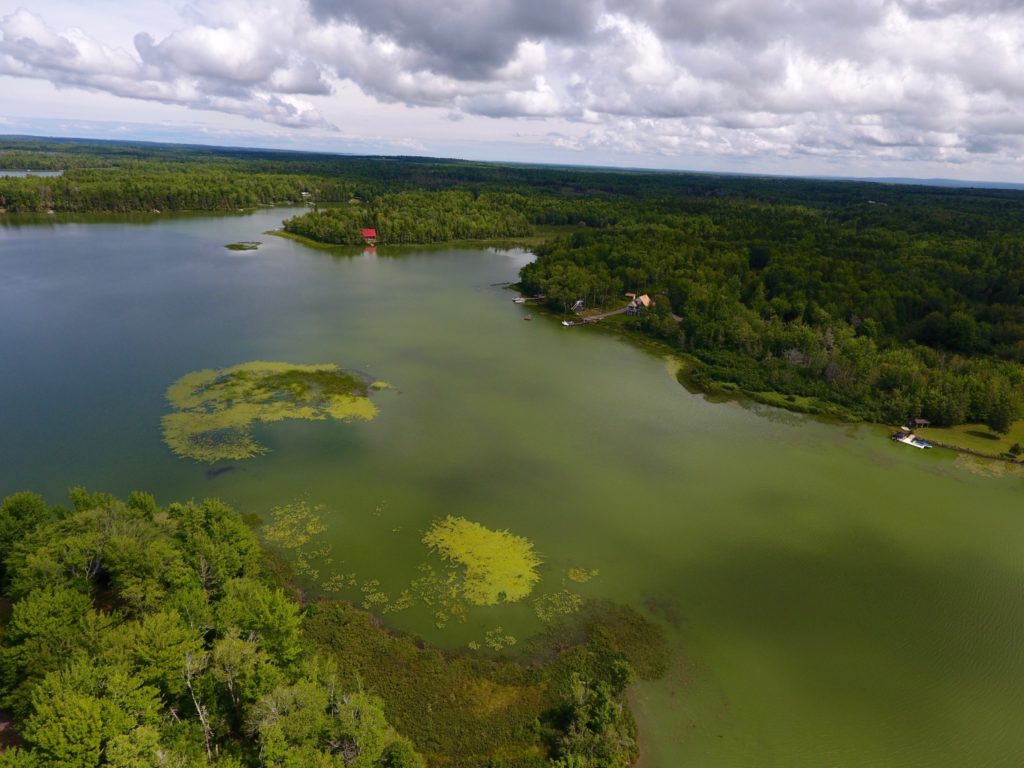Home » Projects & Research
» Algal Blooms
Algal Blooms
- Many types of algae occur naturally in lake waters. They are generally categorized as a large, diverse group of photosynthetic organisms that can be subdivided into the larger and more complex green algae and the much smaller and simpler blue-green algae (more specifically referred to as cyanobacteria).
- Blooms of blue-green algae in Lake Mattatall occurred in Sep-Dec 2014, Sep-Dec 2015 and Aug-Nov 2016 (see photo below). No algae bloom occurred in 2017.
- A very brief information pamphlet about algal blooms has been provided to the MLSA by Helping Nature Heal.
- A particularly unusual feature of these blooms is that they continued even into freezing conditions.
- Taxonomy of the cyanobacteria was determined as the cell counts rose during the blooms. Results indicated that the percentage of Anabaena plancktonica species becomes dominant.
- This species has the potential to produce fatal neurotoxins. Only a few US labs can test for these toxins and such tests are expensive.
- Toxicity of the Lake was tested in 2015 and 2016 but significant amounts of either anatoxin-a or microcystins were not detected. In addition, there were no reports of any sick pets or wildlife that entered the water during the blooms.
- However, since we cannot be absolutely certain whether toxins might exist, lake residents were warned to keep themselves and their pets out of the water during the blooms.



